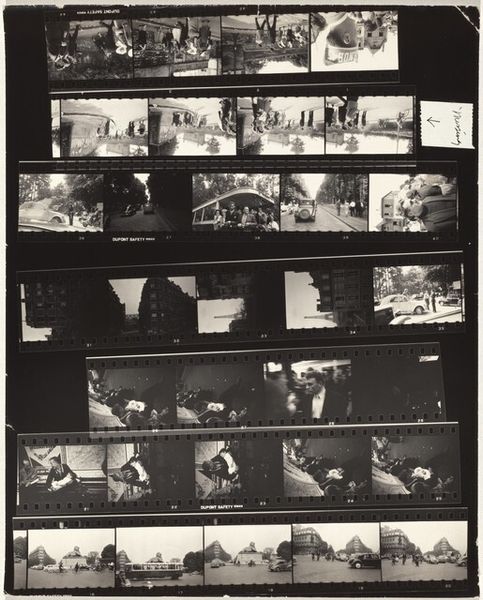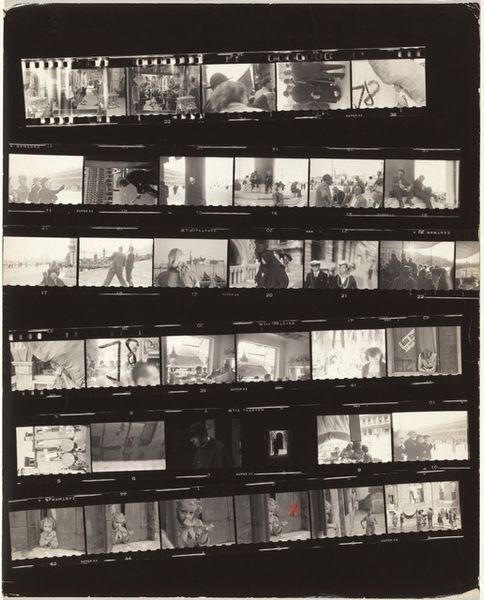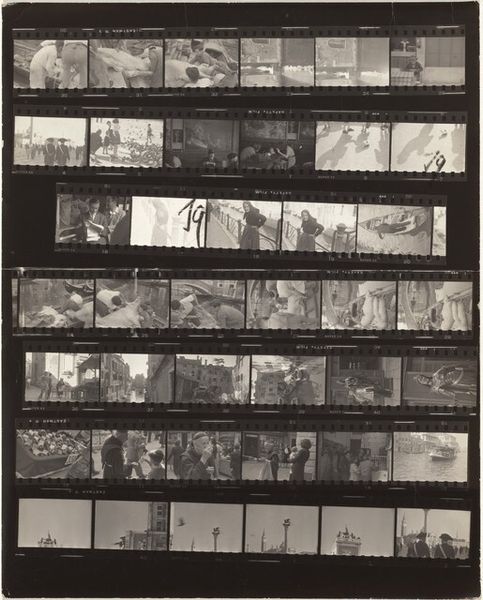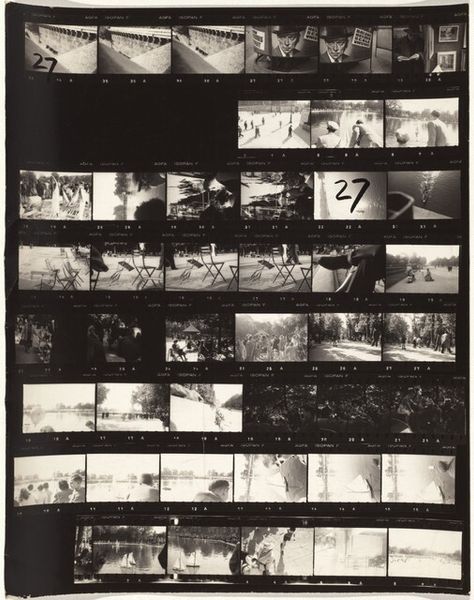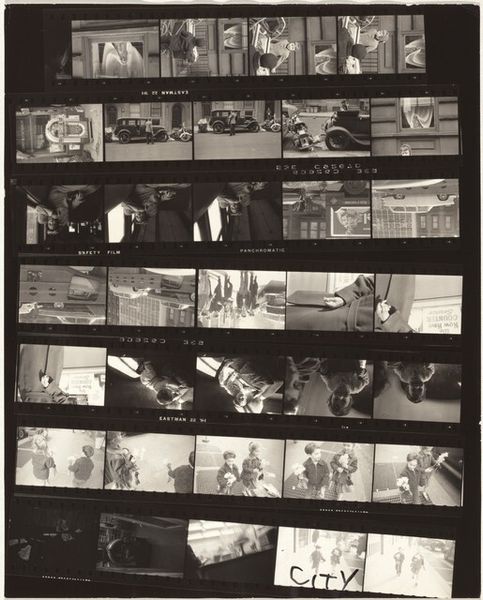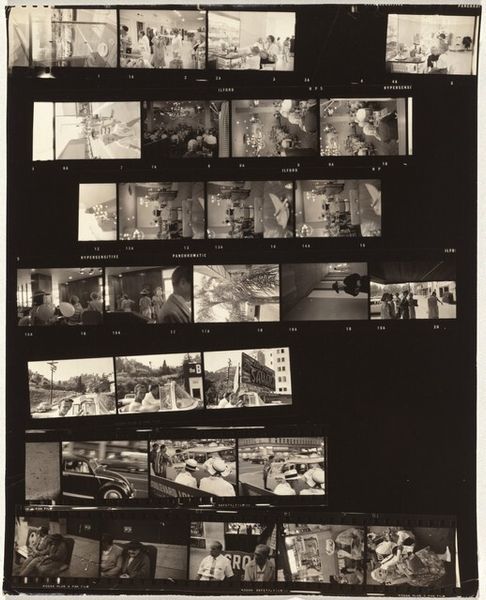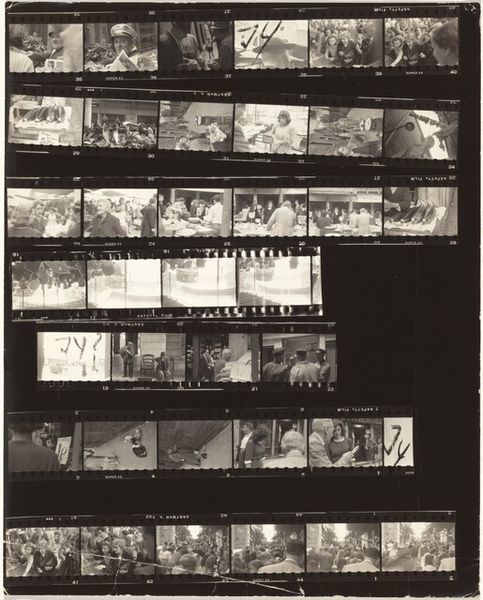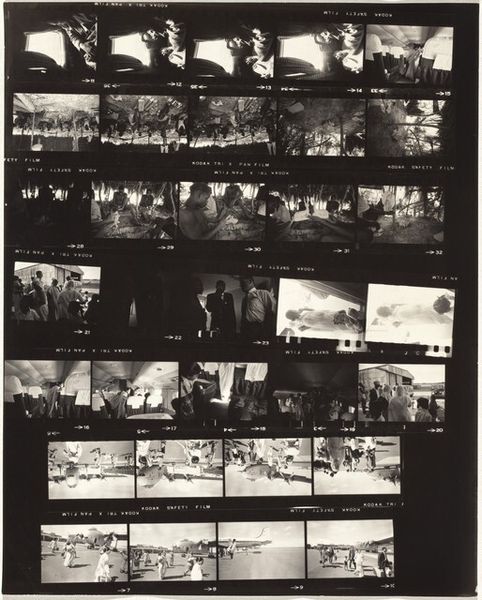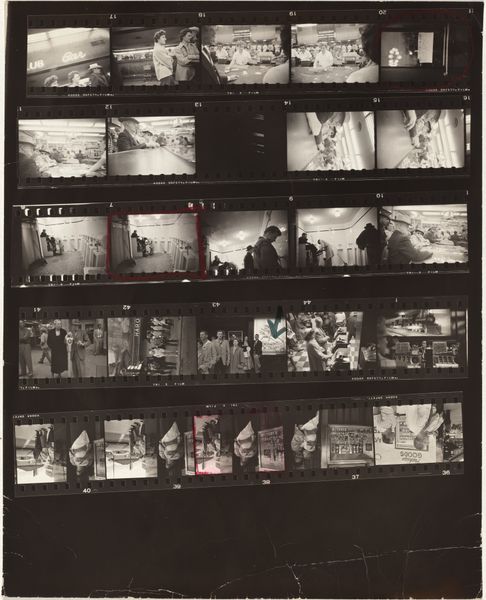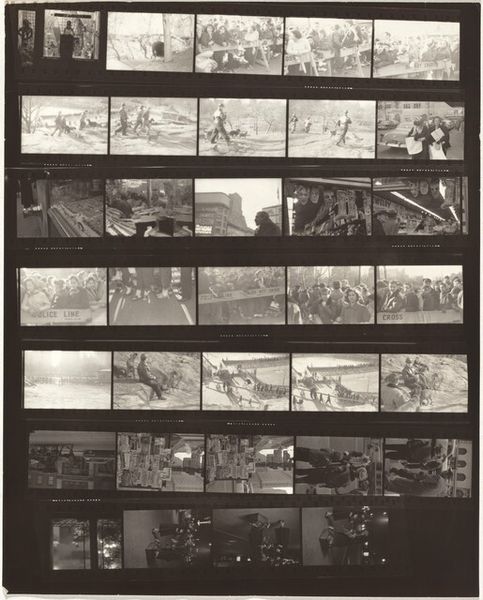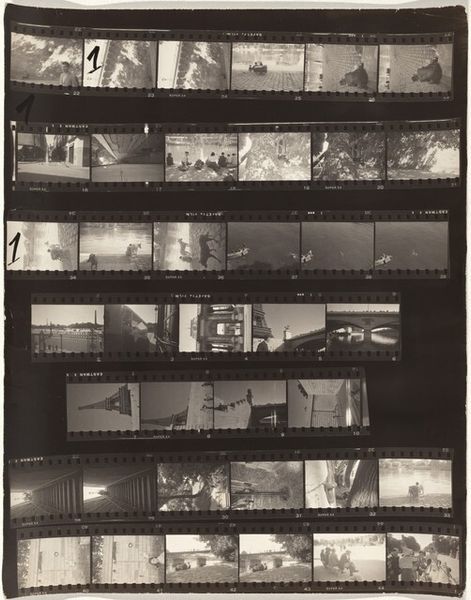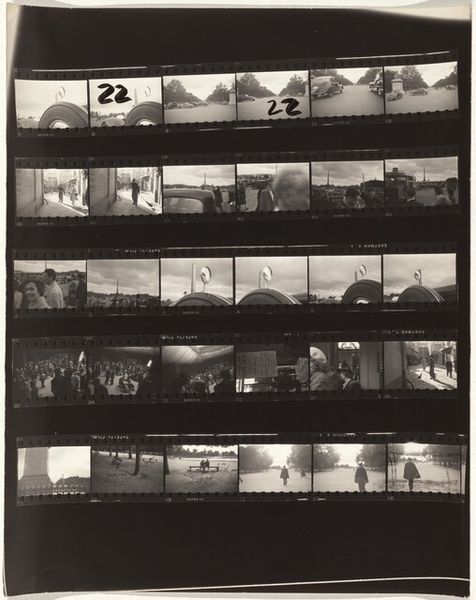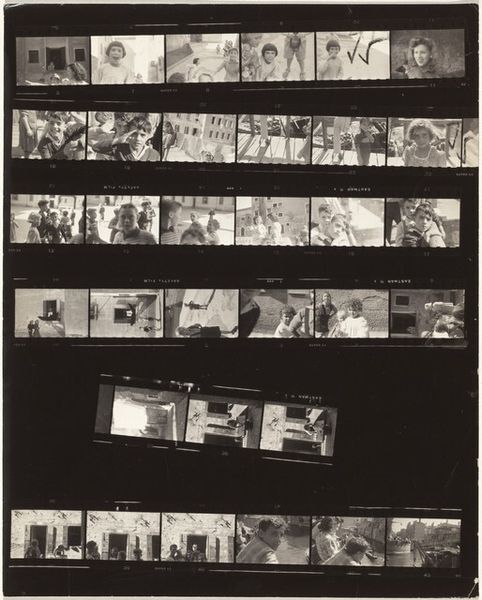
Dimensions: overall: 29.8 x 23.8 cm (11 3/4 x 9 3/8 in.)
Copyright: National Gallery of Art: CC0 1.0
Curator: Robert Frank’s gelatin silver print, “Longchamps--Paris 7A,” created between 1949 and 1950, is before us. What are your immediate reactions to it? Editor: Well, my first thought is: that’s a photographer wrestling with the chaos of choice, like little glimpses fighting for attention on a single frame. You sense he’s figuring something out, sifting through visual data, which feels really human and vulnerable somehow. Curator: Exactly. Looking at this as a contact sheet – as an element of photographic production—reveals so much. It speaks to Frank's working method, this process of editing, sequencing, and how he ultimately chose which images would represent his vision of postwar Paris. We are invited into the editing room, witnessing the choices being made about what to show, and just as crucially, what to leave out. Editor: It’s a bit like reading a poet’s rough drafts—you catch those nearly-invisible nuances. Notice that repeated image of the fountain, for instance, recurring again and again, an attempt at getting something precisely right—an absolute mood. The overall feeling is almost dreamlike, capturing the energy and motion of a city coming back to life. Curator: The gelatin silver print also deserves attention for its role in photography's evolution as an art form. This print is not just a picture; it is also an object that carries the traces of its making: chemical processes, darkroom techniques, decisions about contrast and tonality, all highlighting the physicality and labor behind the final product. Editor: Which brings me back to my initial impression, this incredible vulnerability! It's more than just process for me; I see these fragments, these glimpses as a reflection of memory itself. The way it shifts and jumps, those incomplete narratives – it really does mirror how we remember. Curator: In that sense, it breaks down those artificial divisions, showing the connection between the hand, the eye, and the world—the materials, too, and how they become part of the image’s social meaning. Editor: Agreed. It makes you want to wander around Paris with Robert Frank and witness him deciding on what, exactly, he wanted to make permanent. It seems you don't always land at perfect images. Sometimes, though, you land at images that speak louder because of it. Curator: Ultimately, in examining its form and context, this print speaks to broader themes of artistic intentionality and reception of photographic representation. Editor: Absolutely. It’s both the fragments and whole cloth, I think, that we come to treasure here. A glimpse behind the lens and an accidental commentary all in one.
Comments
No comments
Be the first to comment and join the conversation on the ultimate creative platform.
